Beli Visitor and Rescue Centre for Griffon Vultures: A Great Holiday Stopover
9 April 2022 – Griffon vultures have made a home along Croatia’s 6,278 km coastline for as long as anyone can remember.
But like much of the world’s biodiversity, griffons have been placed under increasing pressure to coexist with their human neighbors over the past several decades. Since the early 90s, locals on the island of Cres have been banding together to protect their feathered friends. Introducing Beli Visitor and Rescue Centre for Griffon vultures, a tourism must for anyone looking to taste the breath of Croatia’s wild beauty.
Above the sparkling waves of the Eastern Adriatic, one of Croatia’s most precious natural treasures can be witnessed gliding on thermal winds. As if untamed by the forces of gravity that tether the rest of us to the earth, Griffon vultures (Gyps fulvus) move effortlessly over skies across the Mediterranean, Middle East, and Central Asia. However, those found on Cres, Krk, Prvić, and Plavnik are unique. Croatia’s special brand of vulture earns its fame from their unusual homemaking behaviour, nesting on the jagged cliffs of the Kvarner islands, a unique sight to this region.
Griffons are spunky creatures, rocking a quilt of brown feathers below and an iconic bald head on top, a feature which I can’t describe as anything other than Muppet-like. While these qualities give the birds their unique look, the purpose of this smooth scalp extends far beyond a possible career on children’s television. As you may already be familiar with, vultures sport this cranial oddity for sanitary reasons, preventing the gore from their favourite foods from getting tangled in their plumage. I guess this is perhaps an unsavoury reminder of the dietary requirements of this nonetheless charming species.
While the vulture nutritional regimen may seem off-putting or even grotesque to some, these avian recyclers play a critical role in world ecosystems. If left unchecked, the rotting carcasses of dead animals provide an ideal environment for bacterial pathogens that could otherwise rot and cause disease. So, we should be grateful to these big-beaked meat eaters, not only for the vital work that they do on the ground but also for the beautiful spectacle they provide.
Fortunately, the people at Beli Visitor Centre happily overlook these natural quirks, committing their time and resources to protect and conserving this species so vultures can continue to call Croatia home for years to come. The center continues a project started by ornithologist Dr. Goran Sušić who led the former Eco-Centre Caput Insulae-Beli from 1993 to 2012. However, in 2014, the project was taken over by Priroda Public Institution.
Located in a building that once housed the local school, Beli Visitor and Rescue Centre is a must for families and youngsters who wish to visit the island of Cres (Something to consider adding to your summer schedule!). The recently refurbished building contains a multimedia exhibition on the griffin vultures and life on the island, also providing workshops where children can learn more about these intriguing arial inhabitants.
The need for a rescue center has proven itself to be great. On average, 10 birds are brought in every year, primarily juvenile birds that fell into the sea during their first flights, but adults sometimes need some help too. While this number may seem small, every bird counts, as griffons only reach sexual maturity at age five, and breeding pairs lay just one egg per year. Moreover, young birds have a high mortality rate of 75%, further exacerbating the need for conservation. If you happen to find an injured vulture while in Croatia, call 112, where your information will be forwarded to the center.
If this sounds interesting to you, get involved! In 2018, Priroda Public Intuitions began a volunteer program. Volunteers are accommodated at the center, supporting the work that Beli has become so famous for.
All the information in this article and more can be found here on the Beli Visitor and Rescue Centre’s website.
For more, check out our lifestyle section.
Croatia Longboards Offer Cool and Green Around-Town Travel
ZAGREB November 19, 2020 - Noticeably bigger than a skateboard, longboards are a cool alternative to urban travel. Meet Croatia's first longboard manufacturers, Crushboards, whose eco-friendly products are healthier to use and way more stylish than other green options
You can walk around some European towns and cities and wonder just where the future is going to fit in. The narrow streets seem to want to accommodate only cars, with pedestrians demoted to the narrow edges. Zagreb isn't like that. Osijek and other towns and cities in Croatia are not like that.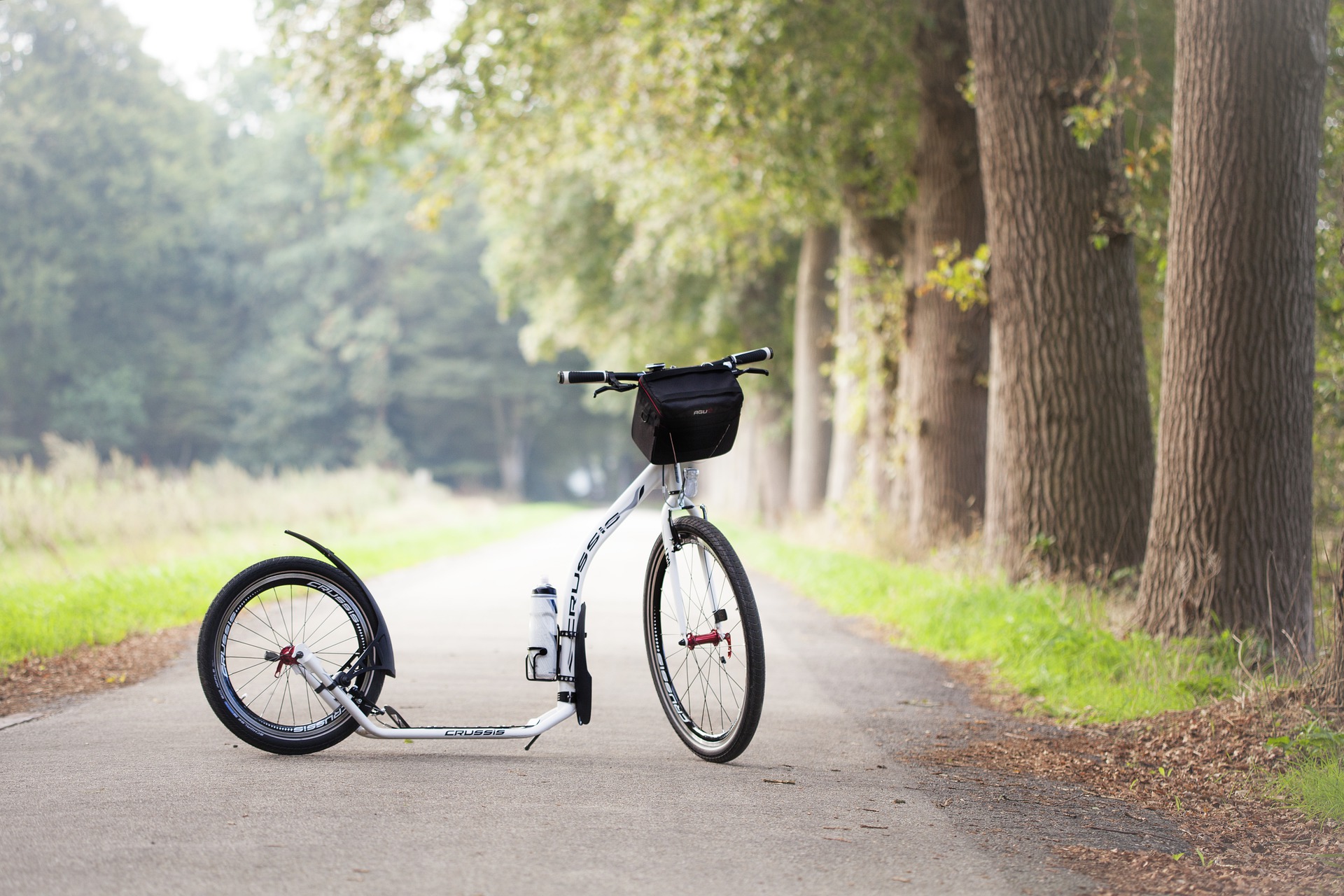 With 220 kilometres of dedicated cycle paths, the city of Zagreb and its residents have been quick to adopt the latest green-friendly ways of getting around the urban environment
With 220 kilometres of dedicated cycle paths, the city of Zagreb and its residents have been quick to adopt the latest green-friendly ways of getting around the urban environment
You only need take a glance at the generous cycle paths around Zagreb to see that this is a city that could easily take on the challenges of a future not reliant on fossil fuels – electric scooters, foldaway bikes, gyroscooters, electric skateboards and monowheels have joined bicycles on the streets of Zagreb as an easy means to get round the city. Could longboards be the next popular choice?
Started by three lifelong friends from Čakovec, Crushboards is the first company in the country to make Croatian longboards. Like a skateboard, only bigger, longboards are well suited to the urban environment of a city like Zagreb.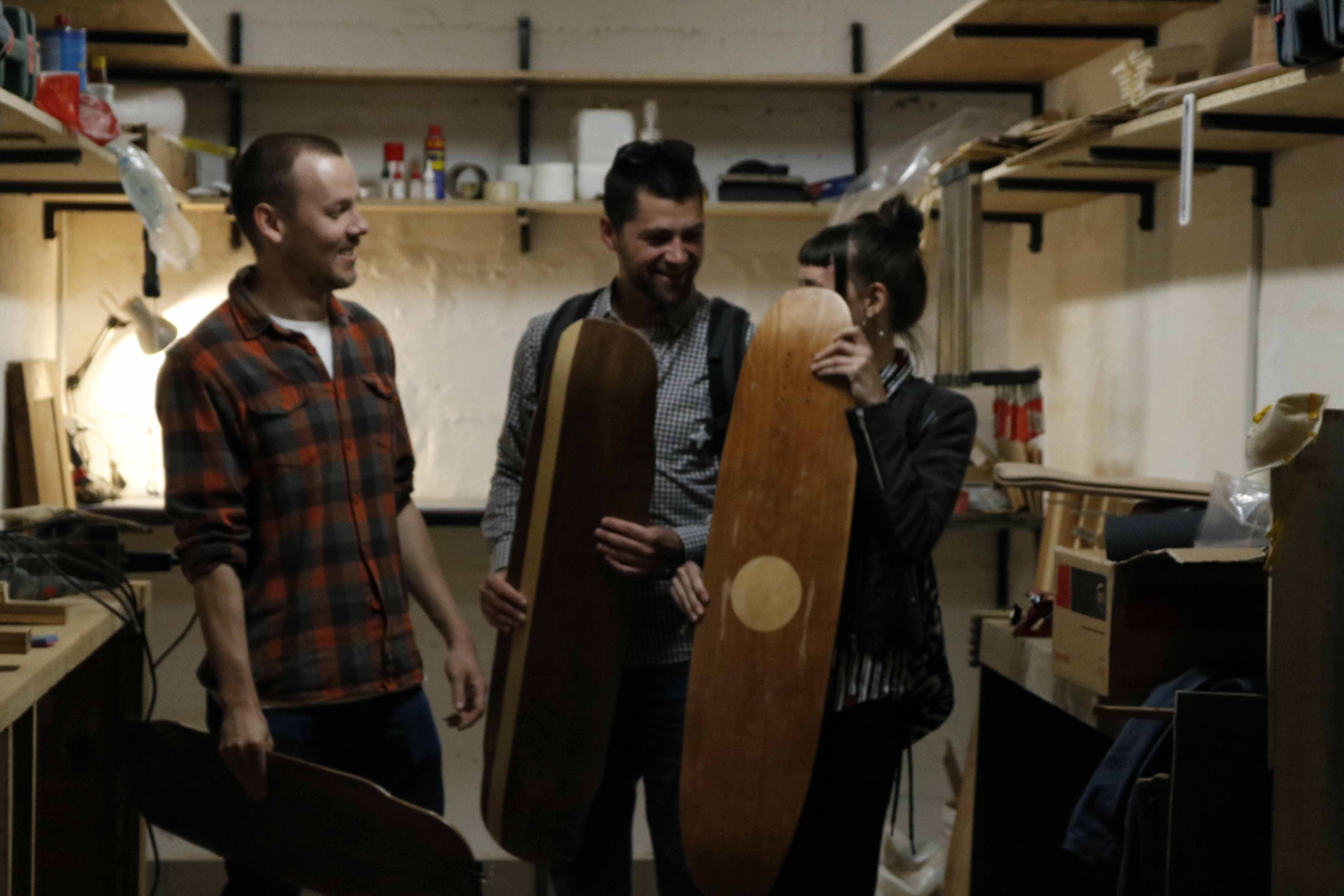 Čakovčani (l-r) Marko Hlebar, Davor Nikolic and Sanda Bogdan inside the Zagreb workshop of Crushboards © Vedran Pažin
Čakovčani (l-r) Marko Hlebar, Davor Nikolic and Sanda Bogdan inside the Zagreb workshop of Crushboards © Vedran Pažin
“This board is longer than a skateboard - 100 centimetres in length.,” Crushboards co-founder Marko Hlebar told TCN when we went to visit their workshop in Zagreb. He runs Crushboards with Davor Nikolic and Sanda Bogdan. “It's a bit heavier than a normal skateboard and uses different wheels. You can perform different tricks on each, dependant on the weight of the board, but the main thing for us is that a longboard is easier to ride on in the urban environment, in the city.” Practising on a Crushboards longboard inside a Zagreb park. The boards are intended as much for a regular inner-city commute as they are for such trickery
Practising on a Crushboards longboard inside a Zagreb park. The boards are intended as much for a regular inner-city commute as they are for such trickery
“The wheels are larger so it's easier to travel on one of these in the city than it is on a regular skateboard,” Marko tells us. “It's better for travelling to work or to appointments, your feet get less tired.”
Rather than being the latest cool evolution in skateboards, it turns out that longboards have been around for a long time. In fact, the very first skateboards that were made probably looked more like the hip, eco-friendly product made by Crushboards than a regular skateboard.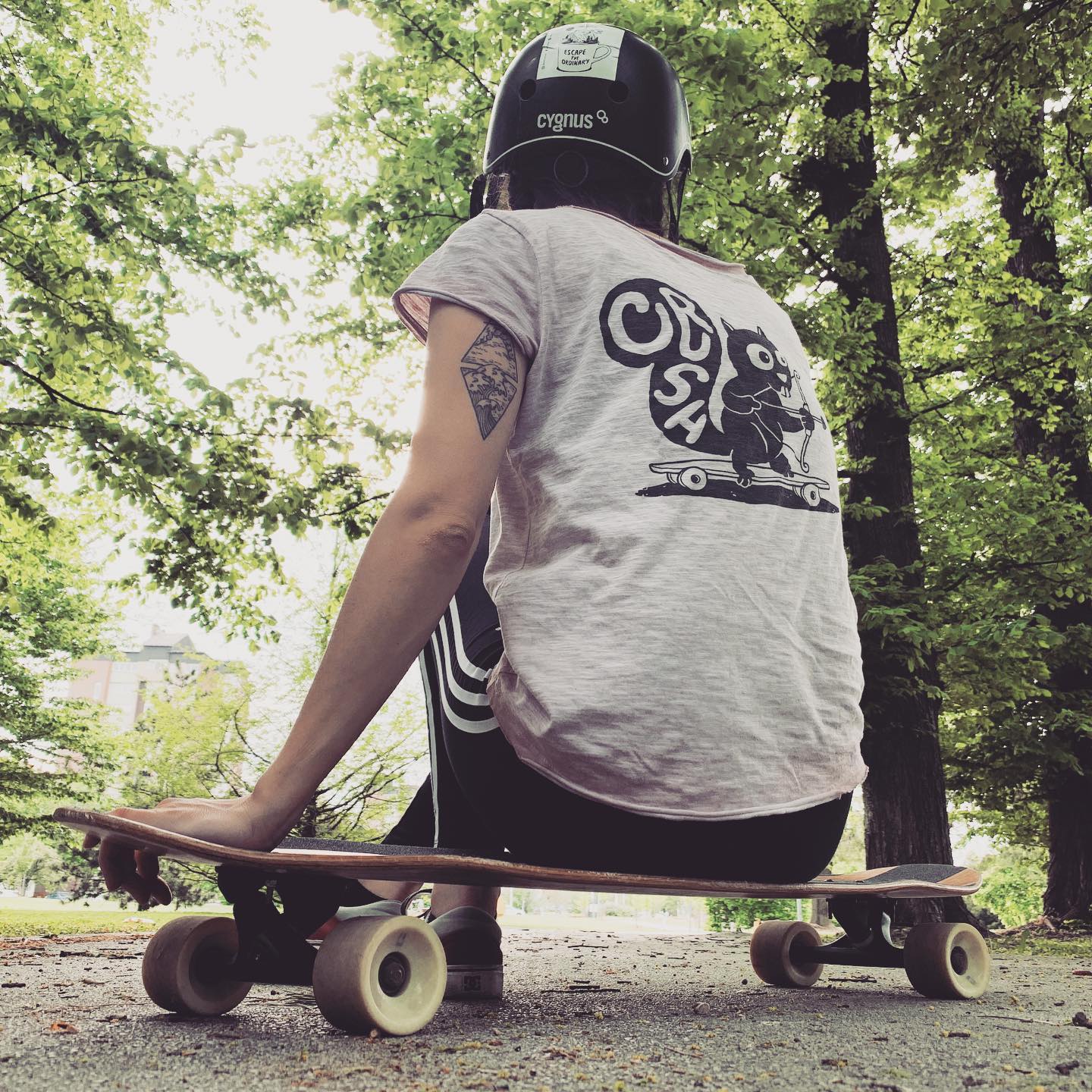 Crushboards see their main product as part of a lifestyle choice - so, it's little surprise to learn they also make their own super-cool t-shirts and accessories
Crushboards see their main product as part of a lifestyle choice - so, it's little surprise to learn they also make their own super-cool t-shirts and accessories
Skateboards were first made in America during the 1940s as a practice board for surfers who were prevented from taking to the waves because of bad weather. But, during its infancy, there were few options available to manufacturers in the skateboarding industry – boards were made using rollerskate wheels, whose size demanded a board closer to that of today's longboard.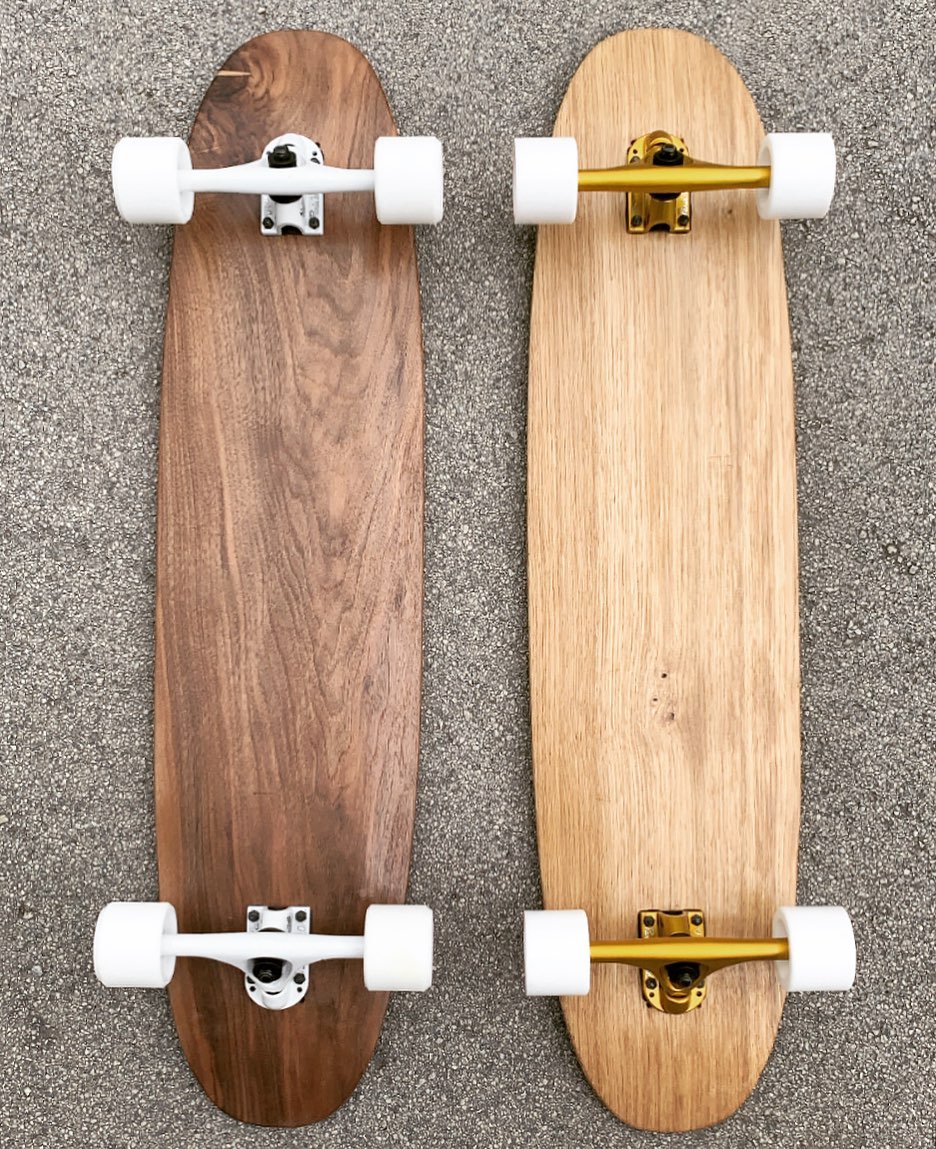
The longboard was, therefore, the first popular urban skateboard and remained so until the 1960s. It has fallen in and out of fashion ever since – the development of ultra-fast wheels saw them rise again in popularity due to them being well suited to downhill racing (the bigger board better absorbs the vibrations produced from speed). The relatively recent phenomenon of longboard dancing has also increased the boards' popularity in Asia.
Like regular skateboards, several different types and designs of longboard exist for different uses. The ones currently made by Crushboards are specifically designed for urban travel. Their boards are made using several thin layers of different materials, which strengthen and provide flexibility when glued together. They are finished on the top side with either oak or walnut, with the other layers holding cherry, teak, fibreglass, carbon, kevlar and two veneers. The wheels and their mounts are currently imported, but Crushboards hope to eventually source as much of the materials required from sustainable sources within Croatia.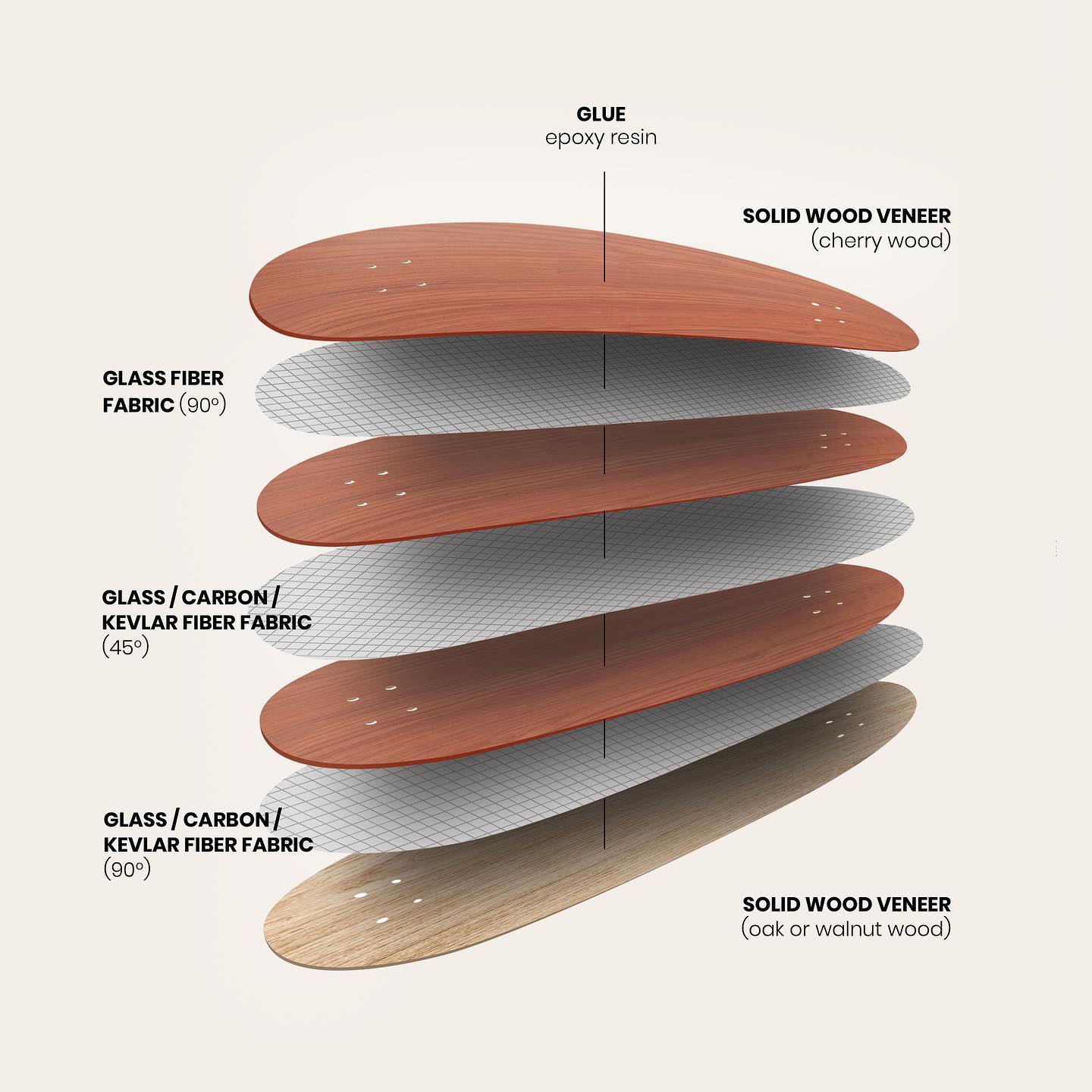 Inside one of Crushboards' longboards
Inside one of Crushboards' longboards
With 220 kilometres of cycle paths occurring throughout Zagreb, the Croatian capital is quick to embrace green modes of transport. Many Croatians are also health-conscious – a motorised scooter or skateboard might get around the city quickly, but they don't increase your exercise quota. Perhaps there's room on Zagreb's streets for these cool urban alternatives to the skateboards of our youths?
All uncredited photos © Crushboards
Zagreb Streets Friendly For Feet - It's European Car Free Day Tomorrow
ZAGREB, September 21, 2020 - Residents and visitors to the Croatian capital will tomorrow learn how Zagreb street life was historically, as the city centre banishes almost all vehicles for European Car Free Day
What would Zagreb's residents of the past think of the city if they saw it today? The Croatian capital's boundaries now extend many kilometres into the surroundings, the huge Sava river is no longer any impediment to travel. The people of the city now live on both sides. Skyscrapers score the sky and well over half a million people can be seen on its streets, roads and highways.
Apart from the size and the unfamiliar building materials, the biggest shock would probably be the speed of the city. Buses and cars race down multiple-lane avenues and trams take you into almost every neighbourhood you'd want to visit.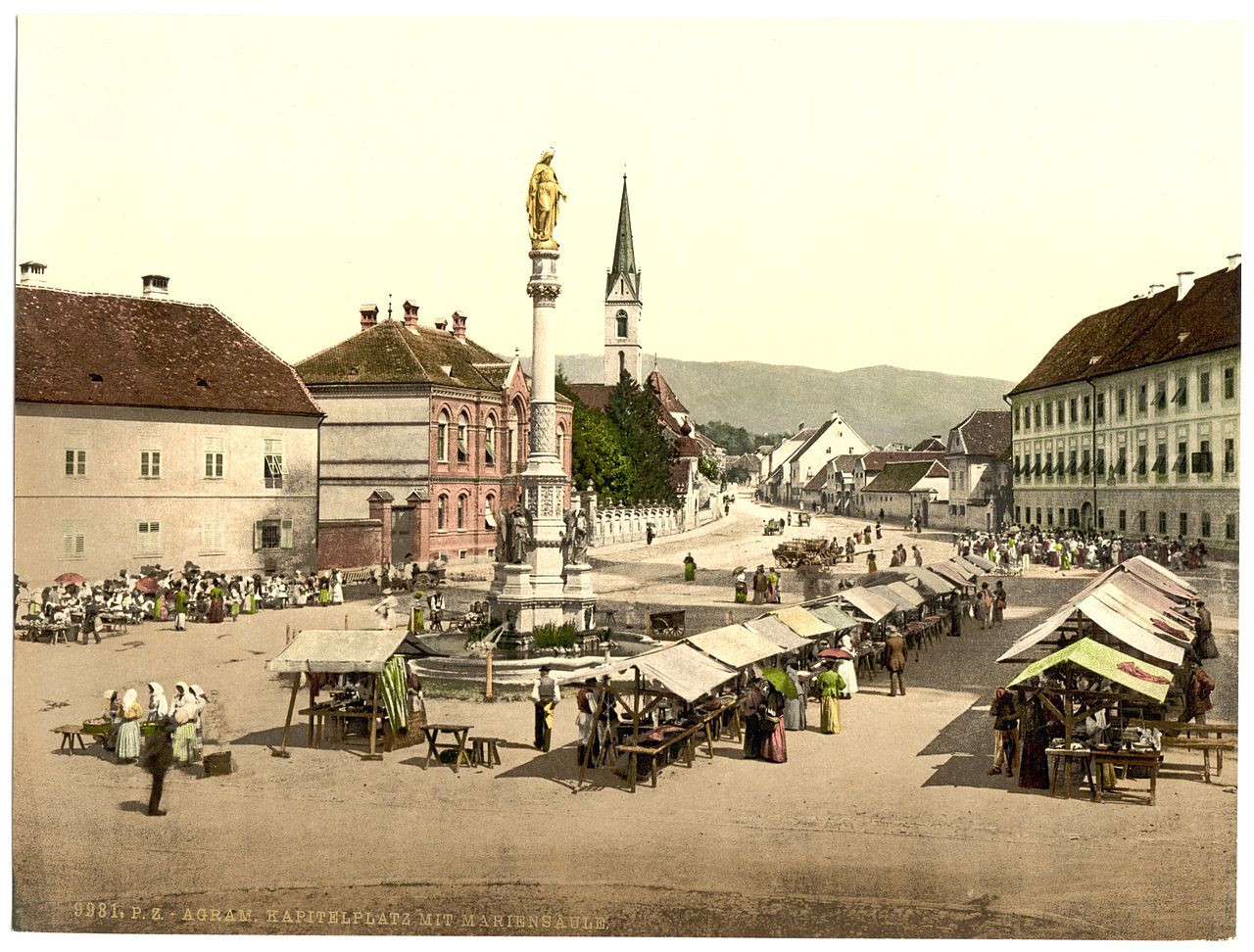 Kaptol, Zagreb in 1905, when almost every day looked like European Car Free Day
Kaptol, Zagreb in 1905, when almost every day looked like European Car Free Day
Tomorrow, Zagreb will return to a pace more familiar to former inhabitants as the city observes European Car Free Day. Motor vehicles will be banned from much of the city's centre between 8 am and 8 pm.
The area of the city centre observing European Car Free Day has the following boundaries; Trg bana Josipa Jelačića - Jurišićeva - Palmotićeva (western edge) - Boškovićeva (northern edge) - Hebrangova (northern edge) - Gundulićeva (eastern edge) - Ilica (northern edge) - Mesnička (eastern edge to Streljačka) - Mesnička - Demetrova - Ilirski trg - Radićeva - Trg bana Josipa Jelačića.
These streets form some of the oldest parts of Zagreb. Long have they been trodden by the pedestrians to whom they'll return tomorrow. Those travelling into the centre by car must park on the outskirts and take public transport into the heart of the city. Trams, taxis and buses will operate as normal.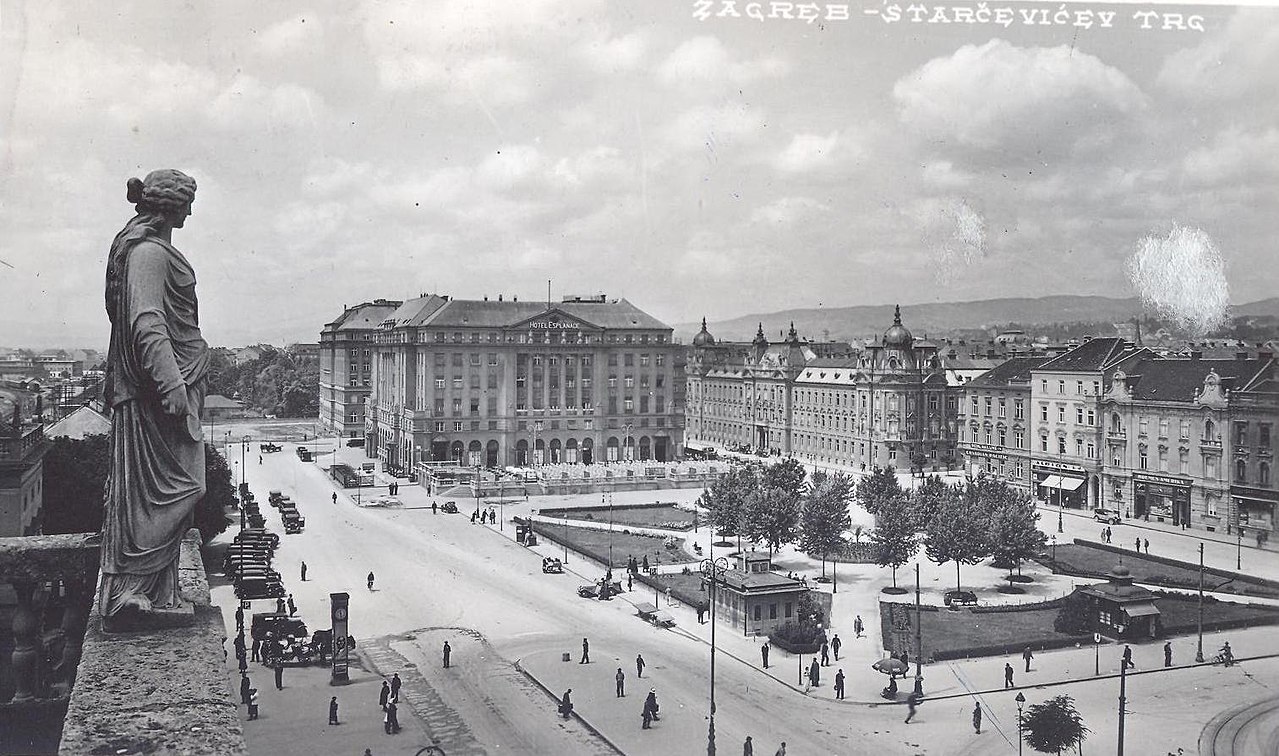 Cars began to be seen more regularly in Zagreb during the first half of the 20th-century. Not so much a European Car Free Day as a Croatian Tram Free Day - the city's famous tram network wasn't nearly so developed back then. The first city in Croatia to have trams was actually Osijek, who introduced a horse-pulled tram network in 1884.
Cars began to be seen more regularly in Zagreb during the first half of the 20th-century. Not so much a European Car Free Day as a Croatian Tram Free Day - the city's famous tram network wasn't nearly so developed back then. The first city in Croatia to have trams was actually Osijek, who introduced a horse-pulled tram network in 1884.
The observance of car-free days is actually over 65 years old, although originally they were introduced in response to oil crises, not for environmental reasons. The more modern reason for having such days is to return city streets to pedestrians. Car-free days have taken place independently in European nations since the mid-1990s, and it 2000 they became aligned on the fixed date of 22 September. European Car Free Day is also a car-free day in many other countries outside of Europe, although this continent is the only one to currently observe it throughout its boundaries.
All uncredited photos lie within the public domain.
For the latest travel info, bookmark our main travel info article, which is updated daily.
Read the Croatian Travel Update in your language - now available in 24 languages
Lastovo Nature Park and the Bright Future for Sustainable Tourism
“Lastovo Nature Park has a bright future in sustainable tourism, with the strengthened knowledge and skills needed to preserve its environment, culture, and tradition to protect it from mass tourism while ensuring that most of its income stays within the local community.”
Young Physicist Unveils the Secret of the Peruča Dam: 280 Thousand Litres of Waste Daily
The secrets of the Peruča Dam unveiled.
National Park Krka Celebrates 32 Years
“Krka has become a national and international brand and the reason many tourists visit Croatia.”
UNESCO Representatives Join Monitoring Mission to Solve Problems at NP Plitvice Lakes
As part of the activities aimed at reducing pressure on Plitvice Lakes National Park, representatives of UNESCO and the International Union for Conservation of Nature (IUCN) - who conduct expert evaluations of UNESCO - were part of a reactive monitoring mission initiated by the Ministry of Environmental Protection and Energy in Croatia. The purpose of the mission was to form opinions on the state of the park, as well as to present optimal solutions.
Zadar and Rijeka Among European Cities to Join Forces on Cruise Tourism
Seven European port cities - including Zadar and Rijeka in Croatia - are joining forces to improve the logistics and planning of the transportation-related impacts of cruise tourism, reports HRTurizam on January 18, 2017.
Environmental Taxes for Cars to Increase
Those who drive more than 10,000 kilometres per year will have to pay more.


